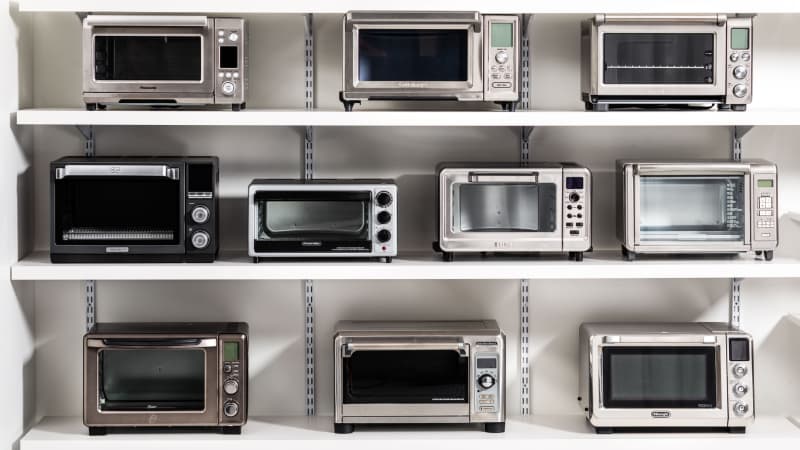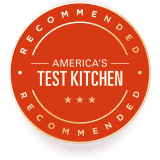The Best Long-Slot Toasters
Equipment Review
A good toaster oven can not only toast, but bake, roast, and broil too. Which is best?
Last Updated Nov. 28, 2023. Appears in America's Test Kitchen TV Season 22: Flavor-Packed Chicken Dinner

We tested four additional toaster ovens, including the trendy BALMUDA the Toaster. We recommend three and have named one of them our new Best Buy: the Toshiba Large 6-Slice Convection Toaster Oven. Our top choices remain the Breville Smart Oven and the Breville Mini Smart Oven.
The best toaster ovens are easy to use and toast, bake, roast, and even broil foods well. We prefer larger models that can fit six slices of toast. Our longtime favorite is the Breville Smart Oven. This large toaster oven is a stellar performer, making perfect toast, cakes, and even roast chicken. It’s durable; reliable; and has a great, user-friendly interface. The Toshiba Large 6-Slice Convection Toaster Oven is our Best Buy. Its console is trickier to navigate and it can’t broil well, but it excelled at every other task and costs much less than the Breville does.
If you’re looking for a smaller toaster oven, we also like our top choice’s little sibling, the Breville Mini Smart Oven. It performs nearly as well as our favorite and can still fit six slices of toast, but its dimensions are a lot more compact, making it a great option for those with limited space.
Just want a good piece of toast, no fancy functions needed? A conventional toaster is probably your best option.
And if you’d like a toaster oven that can also air-fry, we recommend checking out our review of air-fryer toaster ovens.
What You Need to Know
At its most basic, a toaster oven lets you toast bread of any type, shape, and thickness; it’s great for handling rustic hunks of artisanal bread and thinly sliced sandwich bread alike. But a good toaster oven can do much more than simply make toast. The best are truly versatile, functioning as a second oven or even taking the place of your big oven for small jobs. Our favorite models are great for toasting nuts or bread crumbs, roasting a vegetable side dish or even a 4-pound chicken, baking an 8-inch square cake or a small batch of cookies, or even broiling a few fillets of fish. They’re handy for holidays or parties when you need more cooking space, and they won’t heat up your kitchen as much as a full-size oven would on hot days. Better still, they preheat faster, use less energy, and are easy to clean.
What Size Toaster Oven Should I Get?
Toaster ovens come in a variety of sizes. In general, we prefer those that are big enough to function as mini ovens—spacious enough to fit at least 6 slices of bread and tall enough to accommodate a 4-pound chicken with a few inches on all sides to allow for heat to flow properly. The bigger the toaster oven, the more versatile it will be, letting you do more with your small appliance. Smaller toaster ovens not only fit less food, but they also often have more limited functions: Some only let you bake or roast for short periods of 10 to 25 minutes and/or lack a broil setting.
That said, large toaster ovens take up more space and often cost more than smaller...

The mission of America’s Test Kitchen Reviews is to find the best equipment and ingredients for the home cook through rigorous, hands-on testing. We stand behind our winners so much that we even put our seal of approval on them.

Miye is a senior editor for ATK Reviews. She covers booze, blades, and gadgets of questionable value.

This is a members' feature.